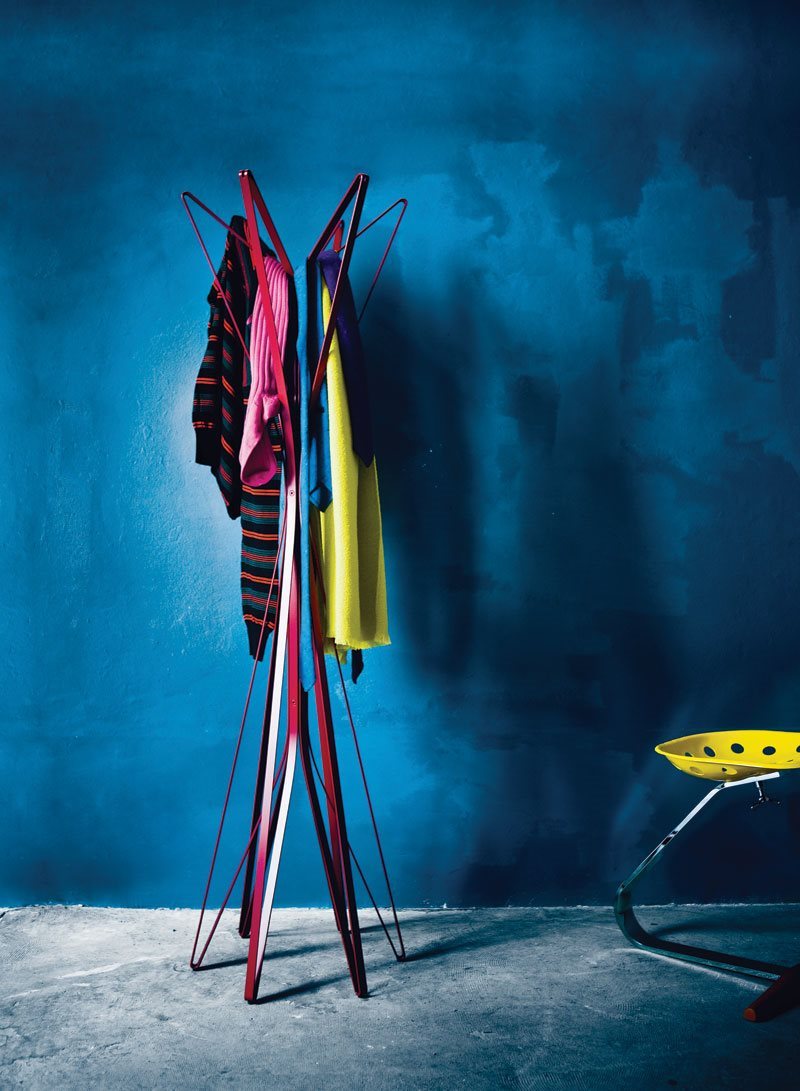Design by Alessandro Dubini
The several models of clothes stands proposed by modern design over the years include wall mounted hook or modular “ribbon” models and free standing elements, rather functional and sophisticated hat stands or standard clothes stands. Practical and essential with a refined design, the clothes stands proposed by Zanotta are developed along a wide range of aesthetical solutions. Sciangai by De Pas-D’Urbino and Lomazzi (1973, Compasso D’Oro Award), Servi (Manto and Tutto) by the Castiglioni brothers (1985) and Museo by Enzo Mari (1991) are the much loved “evergreens”, the choice of a convinced and demanding public. Alessandro Dubini found himself in this framework when he decided to design a new clothes stand for Zanotta. «The project was spontaneously conceived without referring to “famous” extant clothes stands. I think it suits Zanotta both in terms of style and nature of production». It is typical of this designer, who is Italian by birth, but European by adoption, as it merges entertaining, almost playful shapes with cutting edge technologies and innovative materials. Moreover, the result is achieved with elegant shapes that have a powerful emotional impact. The object’s functional features do not suffice for Alessandro Dubini because he is a designer who needs to create emotions. This is, most likely, the reason why his works are often described as sculptures. «The idea that instantly struck me for Aster was to create a thin structure that would be visually “light” but which possessed a solid layout in structural terms. Hence the choice of flat metal as the most appropriate. I then thought of a modular structure, initially focusing on 5 elements. During the prototype phase, the Art Direction of the company and I decided to create two versions, one with 4 elements and another one with 6 elements». The use of colour was a direct consequence of the choice of flat varnished steel, and the chosen shades were pure: white, red, and black. When Aster does not hold coats, overcoats and hats, its star shape furnishes space with a modern trend. «This project issues from the wish to create a simple and practical item, while maintaining a refined original profile. My goal was to create a structure that looked light and delicate, as if it were made of ribbon, and which would be a sculptural element when placed in its setting».


